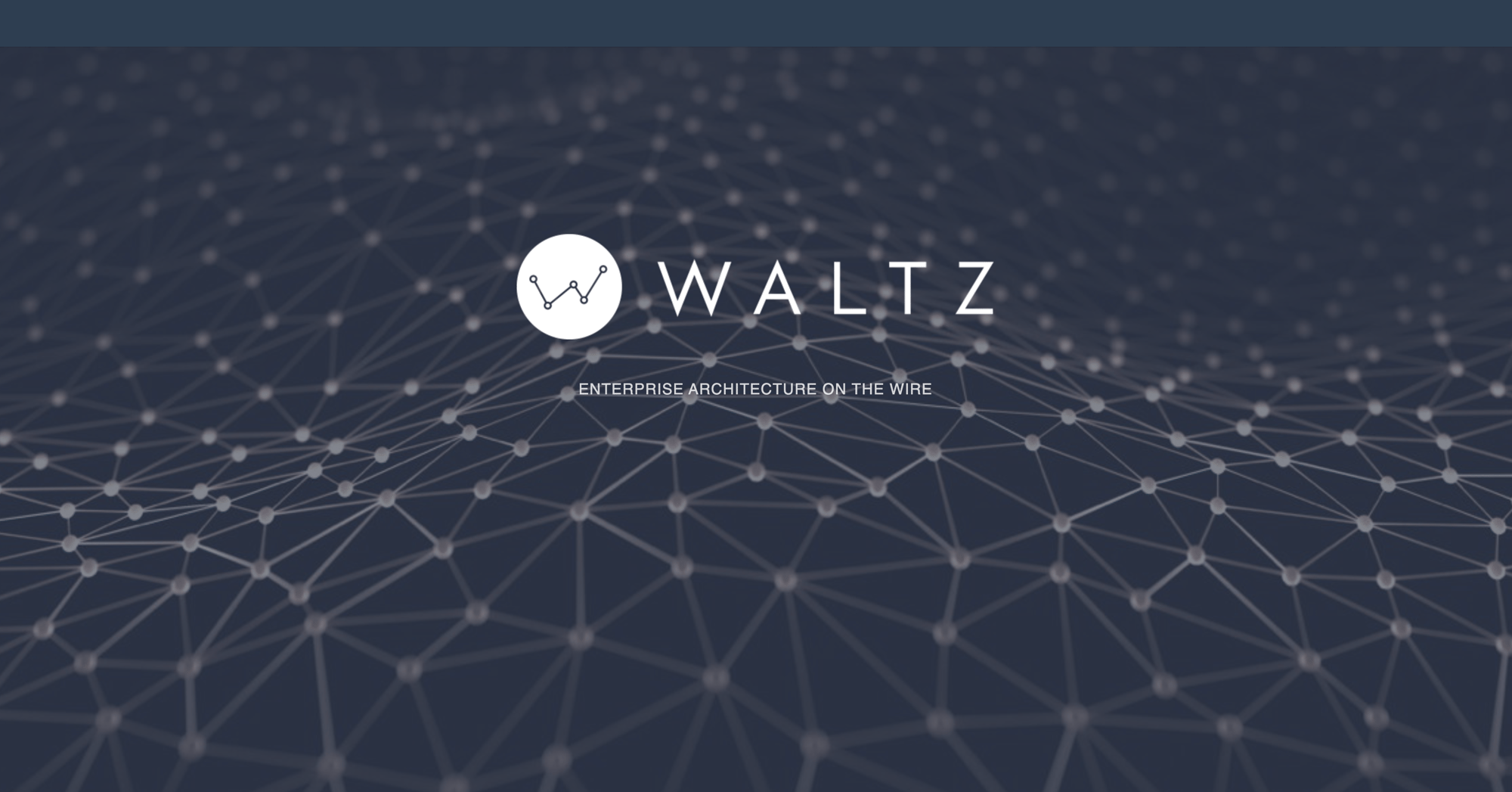FINOS is pleased to announce that Waltz has been successfully contributed to the FDX Program and is now available as a FINOS hosted project through GitHub.
Primarily developed by Khartec Ltd and FINOS Platinum Member, Deutsche Bank, Waltz helps large organisations understand their technology landscape in a consistent, well-documented and easily digestible format. Waltz shows where applications reside, what they do and how they are connected. Waltz has been used to assist with key performance metrics, data lineage, regulatory responses and application rationalisation / migration programs.
What follows are excerpts from the full Introduction to Waltz on GitHub, written by David Watkins, a primary contributor to Waltz.
Waltz Background
Many organisations are frustrated with the quality and coverage of their enterprise architecture information. Data is often gathered in an ad-hoc fashion and stored in multiple disconnected systems with limited user bases. The data contained within these systems is often stale and has limited coverage, when users attempt to answer business questions they must navigate through multiple systems and often need to initiate new ad-hoc data gathering exercises to pull together the information needed.
Waltz, which was started as an open source system in 2015, is designed to address these issues. Its approach is to connect these data sets and open them up to all employees. By allowing employees to view, manipulate and modify or crowd source data capture, we believe that we can greatly improve the current status quo of enterprise information management.
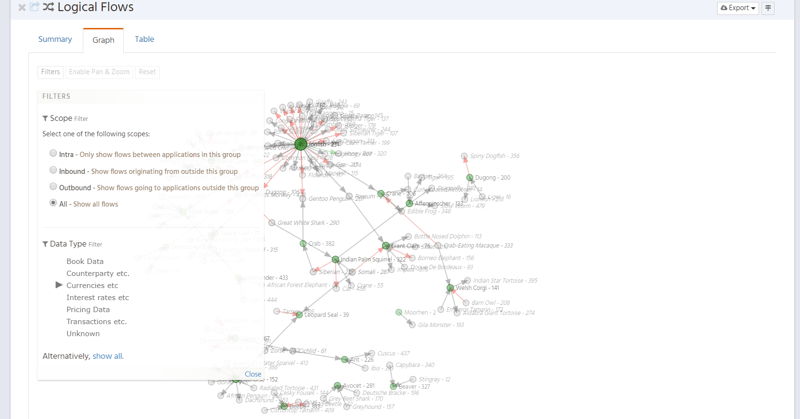
Waltz CORE ENTITIES
Waltz's architecture revolves around several basic entities:
- Organisational Units: the hierarchy of departments and divisions within the enterprise
- Applications and Actors: applications are used when describing the technical landscape and are typically owned by an organisational unit. Actors are used to define internal and external non-application entities. For example the Bank of England may be an external actor and the Chief Risk Officer may be an internal actor.
- Data flows: these are flows of data between applications and actors, the flows are enriched with data types and can be optionally documented down to the detailed specification level.
- Taxonomies: Waltz allows clients to specify many types of taxonomies which are then used to define and rate how other entities fit within the organisation.
- Change Initiatives: Enterprises are not static and so change must be accounted for. Amongst the mechanisms Waltz offers are Change Initiatives which describe specific sets of scheduled changes.
- People: Waltz is particularly interested in how people are related to the above entities.
These core entities (and many other supporting entities) form the basis of the Waltz data model. Flexibility in the model is offered by specific, client definable, extension entities. Having a strong, opinionated model allows Waltz to do a lot more 'out of the box' without requiring heavy customisation which often yields unsatisfactory results and increases delivery times.
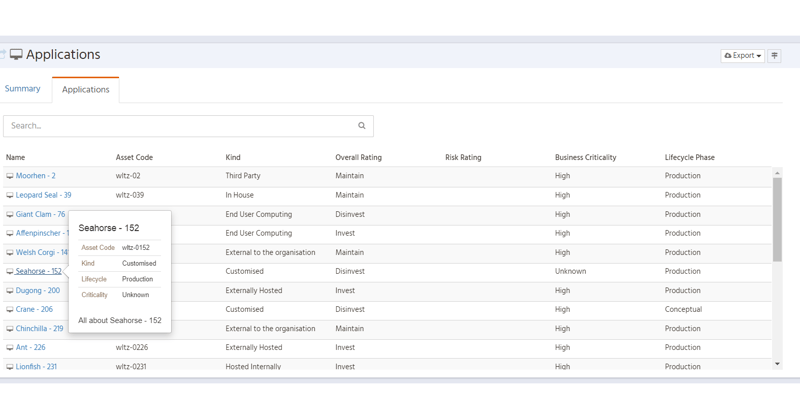
Grouping
A large part of the power of Waltz comes from its ability to dynamically aggregate entities to provide custom views over the enterprise data set. We can easily navigate to a grouping entity to see breakdowns of all the other entities they reference. For example we can view the Organisational Unit "Operations" and see all applications with their costs, data flows, related taxonomy mappings and change initiatives (and others).
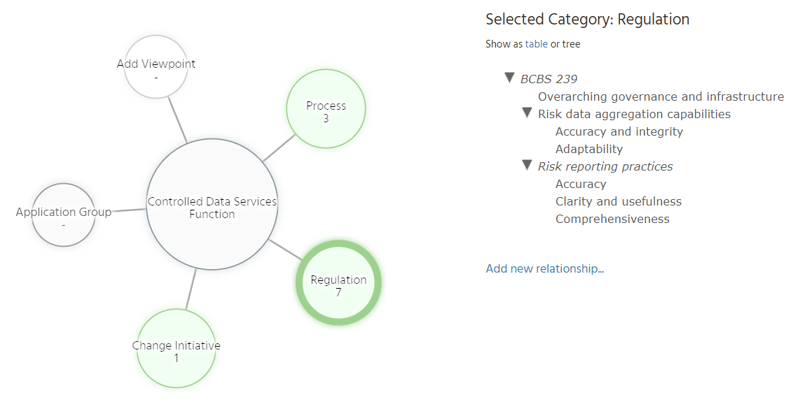
Flexibility
Although Waltz provides a fixed, opinionated, data model there are several entities designed to allow flexible usage. These include:
Waltz Surveys are one of the main entities designed for flexibility. These allow users to define a template, consisting of a list of questions - each of which can have either simple answer types (text, numbers, enums etc) or relate to another entity in the Waltz model (e.g. applications or taxonomy items). Once a template is prepared, it can be issued to a set of users derived from the Waltz model. As an example, we may wish to issue a survey to all "Application Managers" who have an application referenced by the "Operations" org-unit grouping entity.
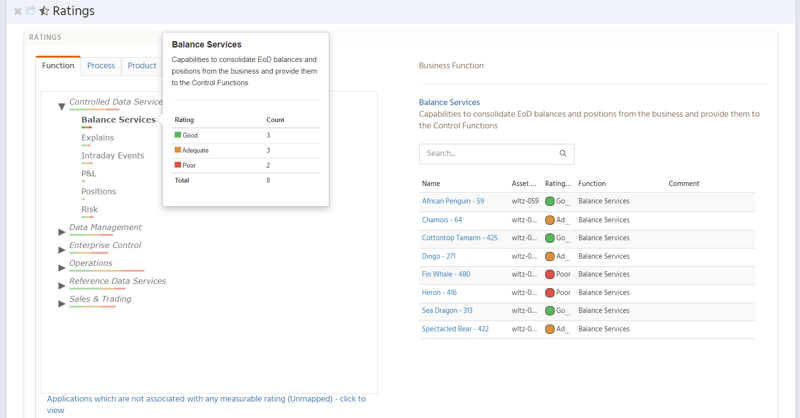
Future State
Enterprises change over time and Waltz helps to describe these changes. A variety of mechanisms exist to support this. Change Initiatives, which have already been mentioned formally describe projects and programmes which will impact the enterprise. Applications, their individual flows and taxonomy mappings can also have planned retirements, commencements and replacements. To help visualize these changes Waltz supports Roadmaps where a sequence of future states can be documented.
Evolving Waltz
Waltz is undergoing active development; the latest release was 1.22 in February with 1.23 scheduled for late March 2020. To learn more about the project visit the overview website and contact the project team via the GitHub issues page.
Your feedback, issues, and contributions are more than welcome.
Thanks to David Watkins, Khartec Ltd, Deutsche Bank, the FDX PMC and to the FINOS Community for their support in transitioning Waltz to its new home.
Read the full Introduction to Waltz on GitHub here, written by David Watkins, a primary contributor to Waltz.
Interested in this FINOS open source project, or any of our other projects? Click the link below to see how to get involved in the FINOS Community.


